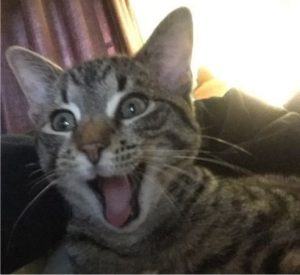I have a few other issues with this so-called Hero’s Journey, at least as laid out by Campbell. First of all, it stipulates a very rigidly segmented, gender-based world. Within the actual stories, there exists only the central character in the story, the useful but ultimately disposable sidekicks, and the monsters. Sadly, most people narrowly assume “central character” automatically equates to male, due to the incorrect assumption that “man” equates to “human.” Further, there are no females of importance at all in the story; when they’re absolutely necessary (as prizes or victims or whatever), women are slotted into the “sidekick” category.
Unfortunately this effectively hides the presence of women as actors in these mythic stories — since many people foolishly assume unless something is expressly described as “female,” it can — must — only be male. Frankly, that sort of archaic thinking is as outdated as a fossilized dinosaur; we need to recognize the statistical majority of people in the world are women, and stop trying to erase their presence like this.
Further, what about people who don’t fit simplistically into the category of “female” or “male”? They do still exist even today, despite modern society’s best efforts at obliterating both them and their memory — which I believe is a shameful practice we as a society should own up to and help change. It’s consequently not easy to research these differently gendered peoples today, but in the overwhelming majority of pre-modern societies (both pre- and post-literate) they were regarded with varying degrees of respect, reverence, and even awe as necessary parts of a healthy society.
It’s unsurprising, therefore, to recognize the Heroine’s Journey doesn’t appear to be the same as the Hero’s Journey. For starters, it doesn’t seem to really ever end. As noted above, females have a clear physical demarcation which measures their shift into womanhood: menstruation. After that there’s the potential for birthing and raising children, and the building of community through your matriline, or the females of your bloodline: grandmothers, mothers, aunts, sisters, and daughters — and this direct genetic linkage through blood can also include your brothers and sons.
It’s therefore easy for females to demonstrate they are adults — which means the usual Hero’s Journey to demonstrate physical maturity isn’t really necessary for them. If anything, that’s only the first step — the beginning of the Heroine’s Journey — as the Heroine demonstrates she’s able to take care of both herself and those in her community who need care as well.
What I refer to as “Personal Independence” in my long and rambling exploration of the books I read would be the mythic equivalent of the Heroine engaging in the Hero’s Journey by demonstrating she is no longer a child — no longer dependent on the community for food, safety, and shelter. The next step in the Heroine’s Journey would seem to be what I refer to as “Be A Heroine!” i.e. she behaves like a thoughtful, mature adult with an eye towards the survival of her community. Her internal growth is personal as well as external, with her taking her rightfully earned place within her circle of peers, clan, or friends — what I referred to as “Crafting Community.”
Her increasing power is not utterly self-centered, as it often is within the Hero’s Journey — she strengthens her friends and community even as she herself is strengthened by “Action!” i.e. the above-mentioned defeat of both internal and external monsters or fears. Further, by “strengthening the community” I emphatically do not mean simply defending it and adding good genetics to it, such as the Hero’s Journey stipulates — I also include allying with new-found supporters, sharing and learning useful ideas in healthy cultural cross-fertilization, and hopefully even changing enemies into friends.
This process is benefited by comrades in the Journey — people who are not rivals but rather part of the Heroine’s life and the community’s growing power — and can lead to what I refer to as “Sexual Tension that makes Sense!” Finally, I firmly believe that being able to face life’s ups and downs with both good comradeship and “Humor” will make even the worst of travails a bit easier to bear.
So if we postulate the Hero’s Journey is a mark of passage into adulthood, what does that make the Heroine’s Journey? It appears to be a rite of passage as well, but to what? Wisdom? True maturity? A powerful wise woman strongly centered in and supported by her community? That seems a worthwhile goal to me, especially in this time of families increasingly shattered by both distance and painful separations. Ultimately, however, I find myself objecting yet again to these gendered labels. What is inherently feminine or masculine about these Journeys? From the reading I’ve done, the Hero’s Journey seems most focused on a more physical questing for personal autonomy and power — which again is something I feel all of us need to learn.

